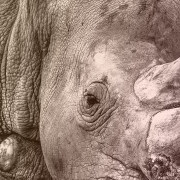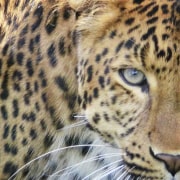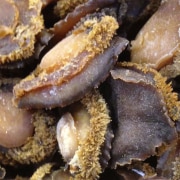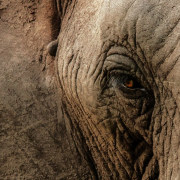|
Getting your Trinity Audio player ready...
|
Image: Flickr/gmacfadyen
Corruption is an enabler of wildlife, forest and fisheries crime. There are no surprises in that statement, as many will be aware that corruption occurs at every stage of the wildlife trafficking supply chain – and it’s a big reason for the continued prevalence of wildlife trafficking routes and networks.
There are also strong linkages between wildlife crime and other types of organised crime, such as drug smuggling or human trafficking. In this new mini-series we take a look at the global situation from various angles. We will present an overview in part 1, explore the link between wildlife crime and corruption in part 2, the link between wildlife crime and other crime in part 3, and in part 4 we will highlight a recently released case study by the Wildlife Justice Commission (WJC) on South Africa’s long-standing perlemoen, or abalone, smuggling trade. In the final part 5, we will focus on the money laundering methods and routes used to spirit away the proceeds of these crimes.
Jorge Rios, the chief of the UN Office on Drugs and Crime’s (UNODC) global programme for combating wildlife and forest crime, said in March this year that for the global community to have any chance of cracking down on wildlife crime, it must intensify its efforts to “understand, prevent and address the pervasive corruption that both enables it, and is a consequence of it”. Rios was speaking at the start of a special event on the topic, held at the 14th UN Congress on Crime Prevention and Criminal Justice in Kyoto, Japan, on 8 March 2021.
Corruption in wildlife, forest and fisheries crime is well documented, said Rios, and wildlife crimes represent an increasing source of profit for criminal groups. They also fuel environmental degradation, including the destruction and illegal exploitation of forests and our wildlife and marine resources, contributing to biodiversity loss and climate change.
At the same event, UNODC executive director Ghada Waly noted the multifaceted nature of such crime, adding that it occurs at every stage of the trafficking chain. She stressed that, as countries move to recover with integrity from the global Covid-19 crisis, there is an opportunity to disrupt corrupt networks that profit from and perpetuate these crimes against nature.
Basic things we should know about the illegal wildlife, forest and fisheries trade
Transparency International (TI) describes wildlife crime as any “environmental-related crime that involves the illegal trade, smuggling, poaching, capture or collection of endangered species, protected wildlife (including animals and plants that are subject to harvest quotas and regulated permits), derivatives or products thereof” (WWF, 2012:9).
Such crimes will contravene both national law and the internationally recognised Convention on International Trade in Endangered Species of Wild Fauna and Flora (CITES), which places regulations on exports, imports and re-exports of wildlife, and aims to protect endangered fauna and flora – including their by-products – through a control system for any trade and transaction in these species. CITES came into effect on 1 July 1975.
So what does this sort of crime look like? Think of the illegal trade in shark fins, or caviar, or pangolin scales, or ivory, or lion bones, or bear bile, or rhinoceros horn, or eels, or orchids, or any of hundreds of species that fall prey to unscrupulous activity. Think of the exploitation of rare and protected timber such as rosewood species, chopped up in unsustainable quantities to be sent overseas – and when one reads about this particular illicit trade, the destination most often mentioned is China, which is a big consumer of numerous trafficked species.
On a smaller scale, think of those popular television series Border Security and Border Patrol, among other similar shows, in which travellers are regularly caught trying to smuggle undeclared plants, seeds, animal parts, whole animals, and drugs through the customs gates.
All of these actions, whether large-scale or seemingly insignificant, contribute to the estimated annual value of US$7-billion to 23-billion that is attached to the illegal wildlife trade.
It is, however, important to note that not all wildlife or plant trade is illegal. There are many thousands of species of wild plants and animals that are harvested or caught in their habitats and sold legitimately for purposes such as medicine, pets, or tourist items. Some of these activities require a permit. Endangered flora in the Western Cape, for instance, may be picked, transported, sold or owned, but only by a person in possession of a permit.
The crisis occurs when the illegal portion of this industry increases to dangerous and unsustainable levels – which is happening. The illegal wildlife trade has grown to become the fourth largest illicit transnational activity in the world, according to NGO TRAFFIC, which works globally to monitor trade in wild animals and plants in the context of both biodiversity conservation and sustainable development.
This alarming increase not only threatens the very existence of many species in the wild, but it also impoverishes communities, and harms humans. Several reports, including one released in March 2021 by the World Health Organization, suggest that the Covid-19 pandemic was a probable consequence of the illicit wildlife trade – although a definite conclusion has not yet been reached as more research is needed.
Illegal trade in fauna and flora has also been linked to the spread of communicable diseases, and is a threat to our health, says the UN Environmental Programme. It must be noted, though, that the legal trade also contributes to the spread of diseases, by providing “disease transmission mechanisms at levels that not only cause human disease outbreaks but also threaten livestock, international trade, rural livelihoods, native wildlife populations, and the health of ecosystems,” according to research conducted as far back as 2005 by the US-based Wildlife Conservation Society.
And of course, there is ever-present danger to activists, environmentalists and eco-defenders who protect the land and the creatures that depend on it.
All countries are affected
It is safe to say that most, if not all countries are affected in one way or another, whether responsible for supply, transit, or demand. The UNODC’s 2020 World Wildlife Crime Report reveals that nearly 6 000 different species of fauna and flora have been seized between 1999 and 2018, including mammals, reptiles, corals, birds, and fish. This information is held in the UNODC’s world wildlife seizures database (World WISE). No single species is responsible for more than 5% of the seizure incidents, while no single country is identified as the source of more than 9% of the total number of seized shipments captured in the database. World WISE also reveals that suspected traffickers of some 150 nationalities have been identified, illustrating the fact that wildlife crime is truly a global issue.
All in all, the illegal trade in wildlife, forests and fisheries is a deadly business on so many levels. But none of it would take place on such a catastrophic scale, if there was no corruption – for this facilitates many of the crimes along the wildlife trade route.
We see corruption in illegal payments to get hunting licenses to be used for poaching, to secure preferential treatment or manipulate court decisions, or to obtain fraudulent export certificates. It is present in the bribery of game reserve and forest patrol officers, of customs officials who will turn a blind eye to trafficking, and of police officers and prosecutors to avoid investigations. In addition, says TI, corruption and weak regulatory frameworks may offer several opportunities to criminal organisations to launder the proceeds of crime.
We will consider this situation in part 2.







